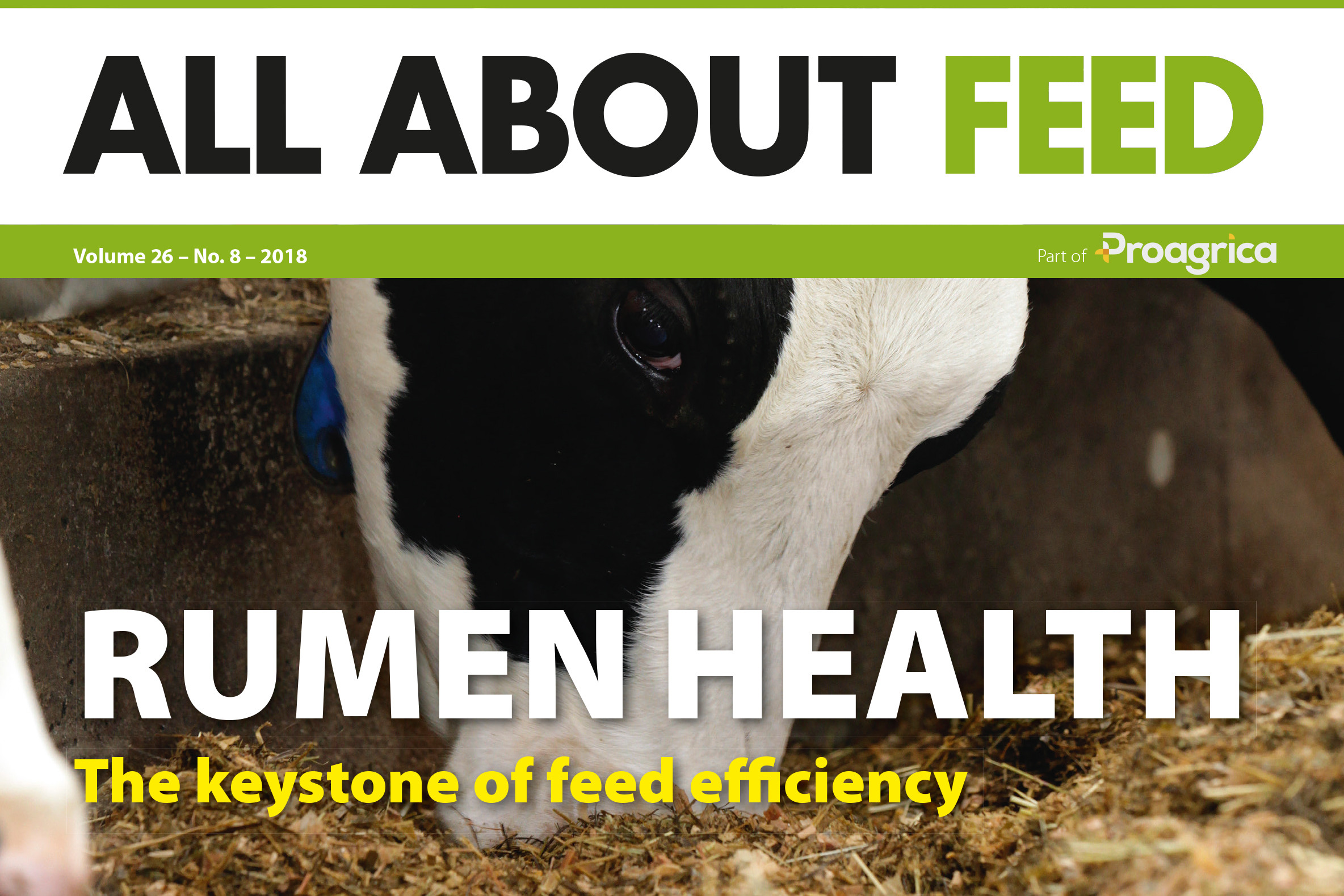October issue of All About Feed now online

The October issue of All About Feed can now be read online. This month we focus on fats in the diet, ruminal acidosis and liquid feed.
Fat nutrition
Fat sources can be grouped into 2 major categories: natural fats and commercial fats. The amount of fat to include in the diet also depends on the other ingredients in the diet (e.g., high versus low-quality forage and level of unsaturated fat contributed by sources). Fats have a nutritional value, but also seem to have other benefits. The addition of fat into the ruminant rations for example appears to be an efficient and easy way of reducing methane production and hence alleviating the negative effects of methane on energy efficiency. Read the full story on page 24 of this issue.
Benefits of fermented liquid feed
For this issue we visited a pig farm in Germany where they apply fermented liquid feeding for the pigs. Explaining just how the fermented feed works is the farm’s pig feeding adviser Dr Ronald Scholten who, under his trademark Dr Ferm, advises farmers, mostly those using Weda liquid feeding systems. “First of all, introducing Lactobacilli to a proportion of the grain in pig feed is recognised as effective in lowering pH of the resultant feed mix down to an ideal level for the pig digestion system: 3.6 to 3.9 ideally. With liquid feed systems where fermented grain is added I always say it is equivalent to the feed being digested in the pig gut for an extra 24 hours. Endogenous enzyme production is also boosted. My work proves the procedure makes nutrients in the feed more available to the growing animals.” Read the full farm report on page 6 of this issue.

Solutions for ruminal acidosis
Also pH related is the issue of ruminal acidosis in cows. A number of experts recently met up in France to discuss the solutions and nutritional approaches to improve rumen health and to prevent acidosis. Helen Golder, research director at Scibus in Camden (NSW), Australia updated the audience on how rumen acidosis can be prevented through nutrition. She addressed that developing control strategies to maintain optimal rumen function and prevent disorders such as acidosis may be challenging as individual cattle appear to have unique ruminal responses to changes in diet. This can be due to several reasons, that are largely based on the type of substrate fed and feeding strategy, but also genetic variation. Read what the other speakers had to say at page 10 of this issue.

Other topics in this issue:
- The rise of resistant bacteria
- Soil bacillus for swine feed application
- Rumen health for better feed efficiency12 Interview
- Microsoft: Great potential for AI in agri
To read all the articles in this issue, go to the magazine overview page and sign up with your current website login.











